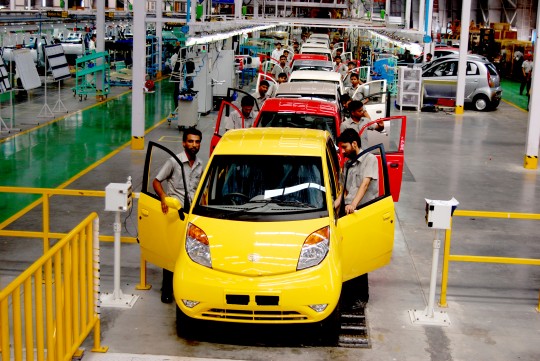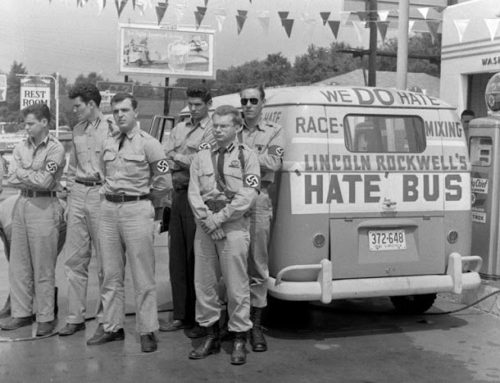The next segment in the live blogging of my book in progress, Branded to the Bone. Want to catch up on what you’ve missed so far? The thread starts here.
 What if, instead of saying that companies can “do well by doing good,” it turned out that some companies can actually do better by doing good? When I joined Kevin and Jackie Freiberg in telling the amazing story of innovation in our book, Nanovation. How a Little Car Can Teach the World to Think Big and Act Bold, we were amazed at the culture we found in the Tata Group, a company that has a 145 year history of balancing profits with the public good.
What if, instead of saying that companies can “do well by doing good,” it turned out that some companies can actually do better by doing good? When I joined Kevin and Jackie Freiberg in telling the amazing story of innovation in our book, Nanovation. How a Little Car Can Teach the World to Think Big and Act Bold, we were amazed at the culture we found in the Tata Group, a company that has a 145 year history of balancing profits with the public good.
The history of the Tata business empire begins in 1868 in Bombay, when 29-year-old Jamsetji Nusserwanji Tata raised investment funds to start a company supplying the British Army in their military campaign in Abyssinia. Tata came from a family of Parsi priests in Navsari, Gujarat. The Parsi community had arrived in India 1,000 years earlier as refugees from the Arab invasion of Persia. They found a welcome in Gujarat, where they established themselves as traders, taking advantage of a Hindu ban on sea travel to provide sea routes for the spice and silk trade with Persia, Arabia and Europe. They prospered and although they remained largely a closed community, they gained a good reputation with their Indian neighbors for their good nature, fair dealings and intelligence.
When the British East India Company arrived in India, they established their first foothold in Gujurat and found, in the Parsis, willing trading partners and kindred spirits. The Parsis were monotheistic and had long-since abandoned the class system. Parsis, with their roots in the Caucasus region of Central Asia, looked to the British like Indo-Europeans and, when they enrolled in British schools they excelled, earning both the respect of the British and lucrative positions of power, both bureaucratic and commercial.
Tata used profits from his first venture to enter the textile business, purchasing and renovating a run-down cotton mill we. This was at a time when most Indian cotton was shipped to England to be milled and then shipped back to be sold to India at a profit. So Tata began milling cotton cloth in Mumbai and keeping the profits in India.
He decided he needed to electrify his plants, so he created the first large-scale hydroelectric plants in India. Then he realized that if India were going to become a world power—and an autonomous one—it would need an industrial infrastructure. That meant steel and steel meant coal. The problem was that it was widely understood there was no coal to be had in India. And here’s where the story gets interesting.

But while he was in America (and on earlier visits to the British Midlands) Tata was appalled by the horrendous industrial slums witnessed in both industrial powers. He brought back his knowledge of industrial efficiencies and the most modern machinery but he was determined to make the mills and mines of India not just modern but humane.
Perrin found coal in the state of Madhya Pradesh, at the confluence of the Subramarekha and Kharkai Rivers, a perfect site for a steel mill. But this was isolated, forested country, sparsely populated, so before they could build a steel mill, they had to build a city and an educated workforce, as well as a transportation infrastructure. They began by building a lake and planting trees. They built schools and hospitals and wide, well-planned boulevards. They built a community.
 “Be sure to lay wide streets planted with shady trees, every other of a quick growing variety,” he wrote to his city planners. “Be sure that there is plenty of space for lawns and gardens; reserve large areas for football, hockey and parks; earmark areas for Hindu temples, Mohammedan mosques and Christian churches.”
“Be sure to lay wide streets planted with shady trees, every other of a quick growing variety,” he wrote to his city planners. “Be sure that there is plenty of space for lawns and gardens; reserve large areas for football, hockey and parks; earmark areas for Hindu temples, Mohammedan mosques and Christian churches.”
The schools were important because the local population was largely uneducated. He knew it wouldn’t be enough to import a workforce. He insisted that the local community be able to participate in and benefit from the plant. By the time the plant was ready to start producing steel, the first class of students was graduating and ready to take jobs with Tata. Over the years and generations, many of them stayed with the company as did their children, grandchildren and great-grandchildren. When employees wanted to break off to start their own companies, Tata not only gave their blessing but invested in them to help them become suppliers to the plant. Many great entrepreneurs in India got their start as Tata employees.
Tata and the company leaders who followed them did all this with little help—and some opposition—from the administrators of the British Raj. When the Viceroy, Lord Curzon, arrived in Mumbai in 1899, Tata and other Indian industrialists presented him with a request to fund the Indian Institute of Science to train Indian scientists. Curzon politely declined, noting that since India had no industry, there would be little need for Indian scientists and, besides, he felt that it was unlikely they could possibly find enough qualified Indians to fill such an institution. Later, when Tata Steel proposed to produce steel rails for the vast railway network, the head of the Indian Railways cried out, “The Tata’s propose to make steel rails? I’ll eat every pound of steel rail they make!” He must have had a bad case of indigestion because Tata Steel not only became a primary producer of rails but also of rolling stock and of rail engines. That rail business grew into truck manufacturing (on license for Mercedes at first and then on their own) and later cars.
Tata was passionate about fighting for people’s dignity. When he was refused admission to Watson’s, a posh British hotel in Mumbai, he immediately announced he would build a hotel that would be open to all, a hotel that would be worthy of Mumbai. The result was the legendary Taj Mahal Palace Hotel, one of the most luxurious and beautiful hotels in the world.
Because of his clarity of purpose—that the role of his companies was to provide India with the industrial infrastructure they would need to be an independent, constitutional democracy and would provide Indians with employment and dignity—India was able to take its place on the world stage. In our book, Nanovation, we described the Tatas like this.
“They were ‘industrial Gandhis,’ dedicated to the vision of an India that could compete globally. As industrialists. And as innovators. Although a steel mill might look like the opposite of a spinning wheel—Gandhi’s symbol for Indian independence—it was just as important. An independent India would never survive on subsistence farming and homespun cloth. It would need the means to compete in the global marketplace and the Tata companies helped provide the means—the investment and the technology—to make independence work.”
That’s a powerful sense of purpose to put at the heart of a company. And it’s paid off for the Tata Group, now numbering more than 100 companies with revenues exceeding $100 billion dollars last year and throwing off more than $6 billion in profits. And where do those profits go? As in most businesses, they go to the shareholders. Only, in this case, two-thirds of the company’s shares are held by a pair of charitable trusts established by the founder’s two sons. These two trusts—one focusing primarily on healthcare and the other on education—have funded many of the greatest educational institutions and hospitals in India, as well as endless community programs across India and Asia. These two trusts distribute nearly $90 million dollars a year to charitable endeavors. And who sits at the head of these trusts? The same Chairman who sits at the head of the Tata Group. Imagine if your day job was to oversee the production of wealth by half a million employees and your night job was to oversee the distribution of that wealth through charitable trusts. It’s an awesome responsibility for a leader.
No wonder the Tata Group is one of the most respected companies in the world.
There are very few hedge funds that can generate $6 billion in profit every year and none that can do so while providing good careers to nearly half a million people and while making profound impacts on their communities.
And while social businesses like Grameen Bank have made great strides in addressing the problems of some of the world’s poorest people, it will take them a long time to equal the performance of the Tata Group in raising people from poverty. Just like they did in Jamshedpur, every time they’ve opened a plant in the last 110 years, they begun by assessing the needs of the local inhabitants around the plant site, evaluating what they would need to become employees of and suppliers to the plant and the creating programs to support these residents—before construction of the plant begins. They start with the basic issues that affect most rural Indian villages: water, electrical power, healthcare and education. They build roads and transportation infrastructure. And the decisions on what to build first are made by the villagers themselves.
There is a shift going on in business today and it’s a shift in what we mean by the words, Corporate Social Responsibility. That used to refer to a narrow band of spending done on the edges of companies, often as a PR move. Donating uniforms to a local Little League baseball team is a great thing to do, as is making annual donations to the United Way or the Red Cross. But corporate social responsibility is moving past doing good works by donating to charity to doing good works as the purpose of your business and the strategic heart of your business plan.
If you’re a start-up trying to attract bright young talent and venture capital investment so you can create the Next Big Thing, you’ll find that while a business plan with great numbers is what investors and employees want to see, a business plan with great numbers and a great purpose is what they will invest in, every time
“There are certainly investors who care only about the money,” said Tim Rowe of the MIT Entrepreneurship Program when he was interviewed by Ira Glass on the radio program This American Life. “But I think that of the investors I know, they would prefer to have an investment which both makes money and does something exciting that makes the world a better place. That’s probably why most of us who do investing got into that.”
Investing to make money? Or to make the world a better place? It’s not an either or question any more. It’s a question of clarity of purpose.


